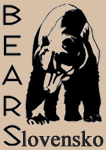

Bears of the world
There are eight species of bear living on Earth today.
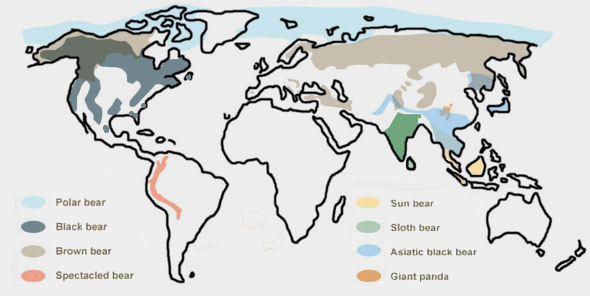
Brown bear (Ursus arctos)
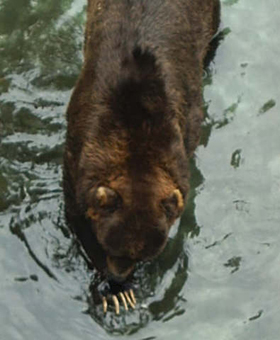
This is the most widespread species, which we can meet also in Slovakia. Its
sub-species include the North American, East Asian, Tibetan, Euro-Siberian,
Alaskan and Middle Eastern.
The largest of them is the Kodiak bear (length 2.0-3.4
metres; weight 470-530 kg). It lives on the shore and islands of Alaska and
is named after one of them.
Another sub-species is the famous grizzly from North
America. It also grows to respectable proportions, up to about two metres in
length. Its long brown fur is light at the tips, giving it its name ("grizzled"
means grey). Like the Kodiak, in autumn it also loves to hunt salmon moving
in mass migrations against the river current.
Polar bear (Ursus maritimus)
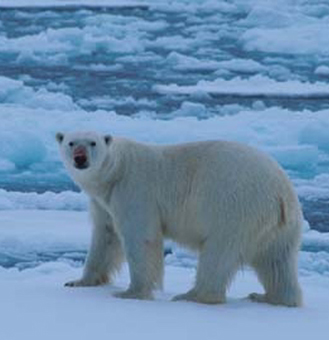
Polar bears live in the Arctic, around the shores of the northern Arctic Ocean
(not in Antarctica). In contrast to other species of bear it eats mostly animals;
those available in such areas are seals, walruses, sea birds, fish, including
carcasses. During the short Arctic summer these are supplemented by berries,
seaweed and grass. The polar bear is the largest species overall. Males weigh
350-650 kg, females up to 250 kg; their height is 1.5 m and length 2.4-2.7 m.
It is superbly adapted for a cold climate. Subcutaneous fat and long hollow
fur isolate it and help it to absorb as much warmth as possible from the sun.
On its paws, on the underside and covered by fur, it has pads and hollows, which
allow it to grip ice better. Its body is elongated, adapted for swimming, and
it has small ears and digits connected for half their length by webbing.
* Although
it is protected, poachers hunt it. Its population is gravely threatened by atmospheric
pollution and global warming.
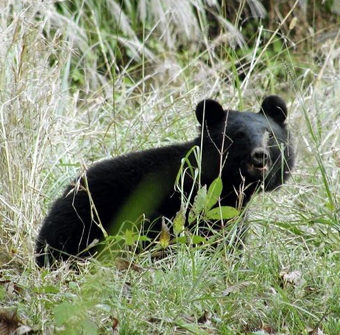
Asiatic black bear (Ursus thibetanus)
This bear lives in Asia, up to 4,000 metres above sea level in the Himalayas. It is smaller than the American black bear, is also black, but has a yellowy-white collar on the chest in the shape of the letter V.
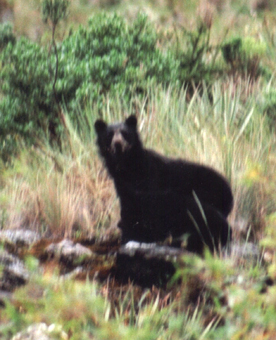
Spectacled bear (Tremarctos ornatus)
This is the only species of bear living in South America, where it inhabits the Andes Mountains. It is black-brown in colour; it has light fur around the eyes resembling spectacles. On the chest it has a collar of longer, also light-coloured, fur. It readily climbs cacti to get fruit.
* It is threatened by hunting for its meat and the destruction of its habitat. Farmers shoot it due to damage to crops.
Giant panda (Ailuropoda melanoleuca)
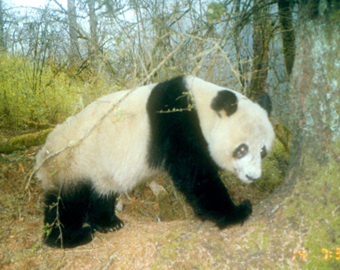
The giant panda lives in southeast China. Its diet is up to 99% vegetarian: bamboo shoots and leaves, of which an adult panda needs as much as 14 kg daily. That's why they feed for 12 hours every day.
* Even though this species, with its beautiful black and white coat, is fully protected, it is threatened by poaching and the felling of primeval bamboo forests. The global population is estimated at just 700 individuals living in the wild. They don't breed well in captivity. Their conservation is being attended to by WWF - the World Wide Fund for Nature, which has the panda as its symbol.
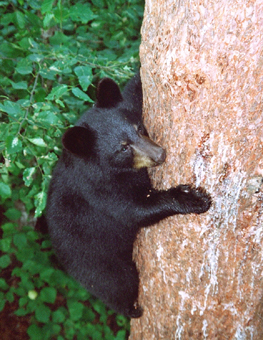
Black bear (Ursus americanus)
The black bear lives in Mexico, the USA and Canada, where it forms numerous populations, including some in areas where the grizzly never lived. It is almost as large as the European brown bear, but has shorter, black (or chocolate brown) fur, light on the chest. It does not have a pronounced shoulder hump, which is the simplest way to distinguish it from the grizzly living in the same regions. It climbs trees very well.

Sloth bear (Melursus ursinus)
The sloth bear lives in India and Sri Lanka.
It has an extended facial section of the skull, an overhanging lower lip, long claws and a long tongue that allow it to search for termites and other insects in wood.
* It is still used for entertainment as a "dancing bear". There are efforts to save this species in reserves and national parks.
Sun bear (Helarctos malayanus)
It occurs in southeast Asia, on the Malaysian peninsular, in southern China
and on the islands of Sumatra and Kalimantana. It is the smallest of all
 bear species, weighing only about 65 kg. It lives in regions of tropical
primeval forests and therefore has the shortest fur of any bear. Thanks
to long claws it climbs trees very well. It catches termites, bees and other
insects with its narrow, long tongue but it also lives from fruit and small
mammals. Poachers still hunt it for its gall bladder, highly valued in the
Far East where it is used to make traditional medicines. It is also hunted
because of its paws, an expensive but popular delicacy in luxury restaurants.
At present it is also threatened by the felling of tropical rainforests.
bear species, weighing only about 65 kg. It lives in regions of tropical
primeval forests and therefore has the shortest fur of any bear. Thanks
to long claws it climbs trees very well. It catches termites, bees and other
insects with its narrow, long tongue but it also lives from fruit and small
mammals. Poachers still hunt it for its gall bladder, highly valued in the
Far East where it is used to make traditional medicines. It is also hunted
because of its paws, an expensive but popular delicacy in luxury restaurants.
At present it is also threatened by the felling of tropical rainforests.
Photographs: Mariel Badillo, Andrew Derocher, Shinshu black bear research group, Ximena Velez-Liendo, Matthew Durnin, Anja Schoettler, Aniruddh Majumdar, Siew Te Wong
